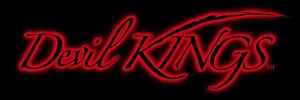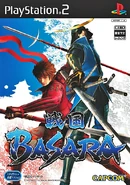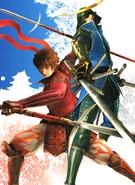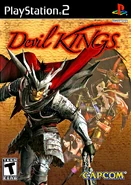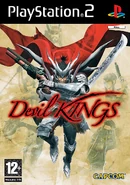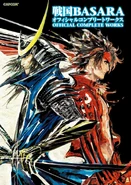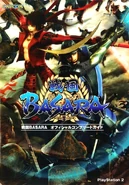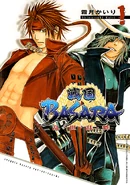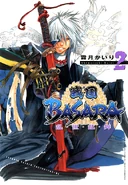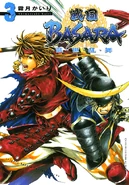Devil Kings, known in Japan as Sengoku BASARA (戦国BASARA), is a 3D hack & slash game developed and published by Capcom. It was released on July 21, 2005 for PlayStation 2. It is the first game in the Sengoku BASARA series.
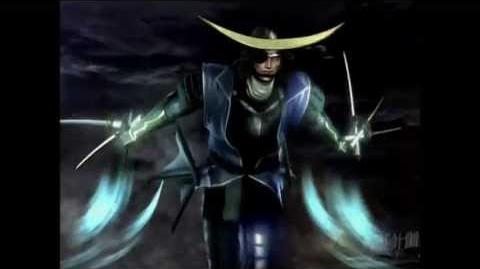
Sengoku BASARA 1 HD - Opening
Opening (HD)
The sequel, Sengoku BASARA 2, was released only in Japan 2006. BASARA would not be localized again until the third main entry in the series, Sengoku BASARA: Samurai Heroes, in 2010. Art was done by Makoto Tsuchibayashi, known for his work on Devil May Cry.
Gameplay[]
This section is currently incomplete.
You can help Capcom Database by expanding it.
It is a 3D hack & slash, or "character action" game, similar in concept to Koei's Samurai Warriors and Capcom's Devil May Cry.
Some significant gameplay changes were made to the Western versions of the game. Four of the characters were made non-playable and various skills were removed or added. The difficulty levels were shifted to make the game more difficult (with the Japanese Normal becoming Easy and Japanese Hard becoming Normal, and Easy rewards 30% less EXP and no 3rd+ weapons while Normal keeps the Japanese Normal reward). The fighting system was also modified, adding an element called "Prime Attack" (one of the characters special attack was made the priming attack, and used that attack to "Prime" enemies making them more susceptible to damage and allowing for higher combo chains).
Characters[]
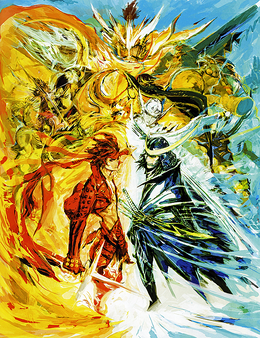
Promotional art by Makoto Tsuchibayashi.
The names of the characters (including the game's title) were changed when the game was originally released in North America and Europe. The names in parentheses are the American initial release names.
Playable[]
- Masamune Date - (a.k.a. Azure Dragon)
- Yukimura Sanada - (a.k.a. Scorpio)
- Tadakatsu Honda - (a.k.a. Iron Ox)
- Shingen Takeda - (a.k.a. Red Minotaur)
- Kasuga - (a.k.a. Venus)
- Xavi - (a.k.a. Q-Ball)
- Toshiie Maeda - (a.k.a. Lark, NPC in Devil Kings)
- Sasuke Sarutobi - (a.k.a. Talon)
- Nobunaga Oda - (a.k.a. Devil King)
- Kenshin Uesugi - (a.k.a. Frost)
- Nōhime - (a.k.a. Lady Butterfly)
- Matsu Maeda - (a.k.a. Bramble, NPC in Devil Kings)
- Mitsuhide Akechi - (a.k.a. Reaper, NPC in Devil Kings)
- Yoshihiro Shimazu - (a.k.a. Zaan, NPC in Devil Kings)
- Ranmaru Mori - (a.k.a. Hornet)
- Itsuki - (a.k.a. Puff)
Non-playable[]
- Ieyasu Tokugawa - (a.k.a. Irdene)
- Motochika Chōsokabe - (a.k.a. Arslan)
- Motonari Mōri - (a.k.a. Kahz)
- Yoshimoto Imagawa - (a.k.a. Muri)
- Ujimasa Hōjō - (a.k.a. Orwik)
Development[]
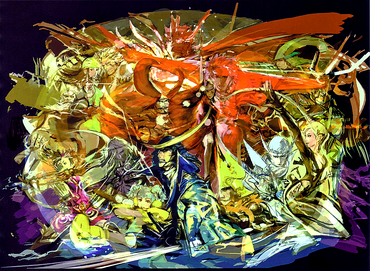
Promotional art.
One of the differences that is most notable is the names. Devil Kings does not use any reference to the Sengoku era of Japan whatsoever.
Producer Hiroyuki Kobayashi originally decided to make the gameplay of Sengoku BASARA similar to the gameplay of Koei's Dynasty Warriors and Samurai Warriors but with a Devil May Cry stylish factor to make it different.[citation needed]
For the Western release of Devil Kings, Kobayashi wanted to make it different again by giving the game a "darker" look. Devil Kings takes place in a "devilish" world as opposed to the original Feudal Japan theme.[citation needed]
Devil Kings features "Prime" attacks, which slightly weakens the enemy for a short time, and makes them more vulnerable to more damage. The "Prime" attacks in Devil Kings cause the enemy health bar to turn yellow and is necessary for filling up the BASARA Gauge. Most characters' "Prime" attacks were originally "Special Skills" in Sengoku BASARA. Some of the armies in Devil Kings do not even look like samurai. Devil King (Nobunaga)'s army looks like an army of black knights, Reaper (Mitsuhide)'s army look like winged demons with a "bat out of hell" kind of look, Orwik (Ujimasa)'s army looks like the ancient egyptians with animal helmets and gold and blue colors, and Lark (Toshiie)'s army looks like warrior brutes with skeleton masks.
The names of the battles have changed as well. It is unknown what the exact names were in Sengoku BASARA, but the battles were based off historic times. The following are some historic battle and their name changes in Devil Kings:
- Battle of Mikatagahara - Storm on the Great Plains
- Battle of Kawanakajima - Battle at Riverglen
- Strategy Battle of Kawanakajima - Ruse at Riverglen
- Honnoji Decisive Battle - Fall of the High Temple
- Honnoji Incident - Twisted High Temple
- Battle of Okehazama - Ambush at Shadow Gorge
- Battle at Nagashino - Deadwood Counteroffensive
- Invasion of Shikoku - Landing at Nanvia
- Siege of Takamatsu - Flooding Giuthas Nam
- Pursuit at Suriagehara - Chase at the Tablelands
- Kyushu Campaign - Leveling Kush
- Battle of Yamazaki - Crossing the River Styx
- Siege of Odawara - Siege of Dark Spire
- Anegawa Dividing Battle - Divide and Conquer Faylinn
- Northernmost Uprising Suppression Battle - Arctica Rebellion
- Siege of Xavi Castle - Pilgrimage to Cathedral City
- Siege of Kasugayama - Assault on Bloomdale
Trivia[]
- When the Rally Pipe is equipped, the Devil May Cry theme music "Lock and Load" is heard during battle.

